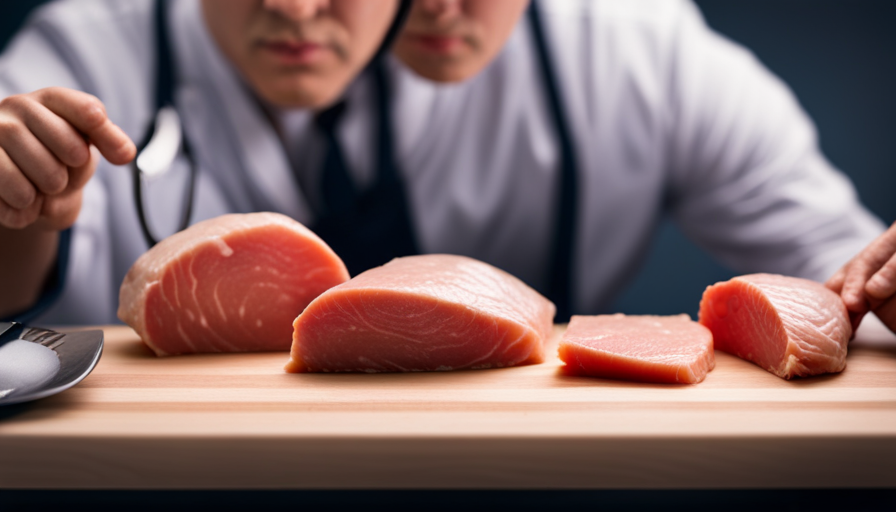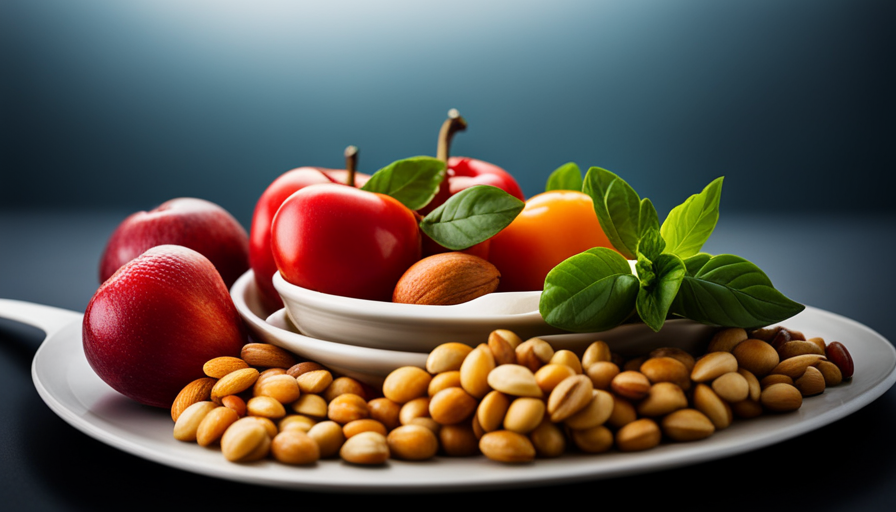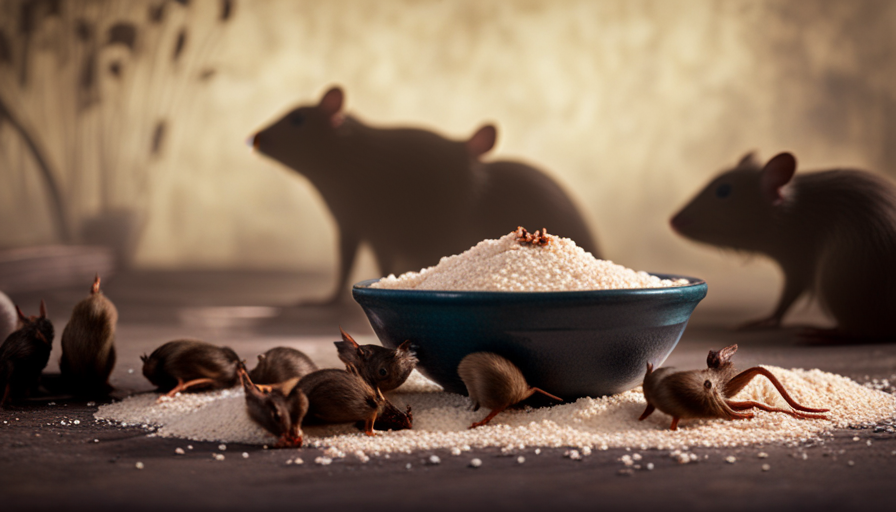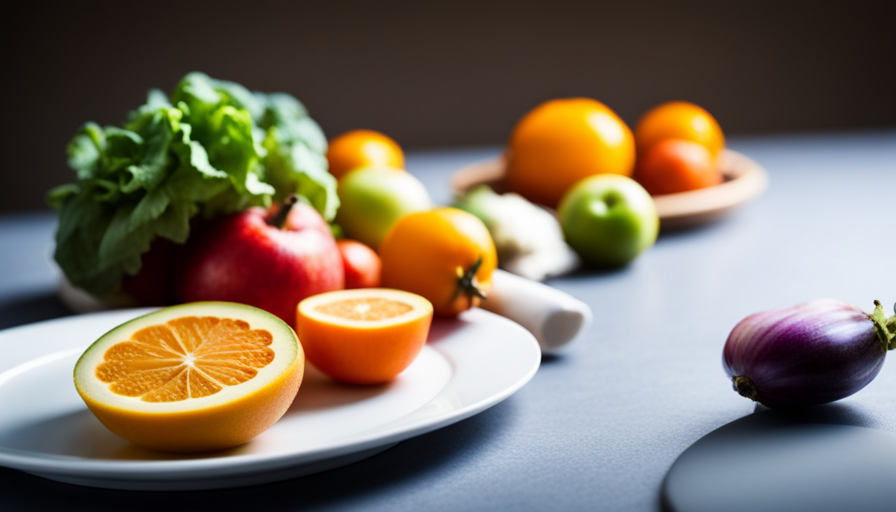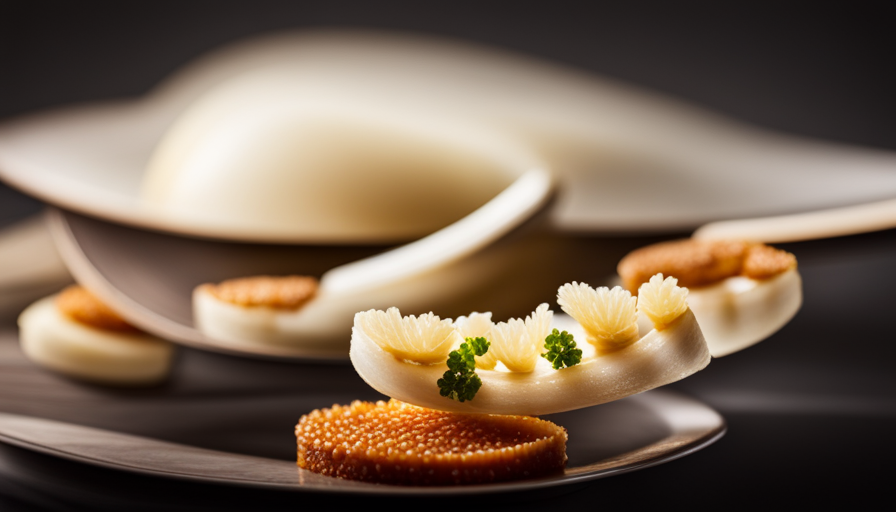Cooking raw chicken is like navigating a tightrope without a safety net—it requires precision and attention to detail to keep yourself and your loved ones safe from foodborne illnesses.
There are two essential food safety rules that you must adhere to when handling and cooking raw chicken. Firstly, you must always handle and store raw chicken properly to prevent any contamination. This involves keeping it separate from other foods, storing it at the right temperature, and washing your hands and utensils thoroughly after handling it.
Secondly, it is crucial to cook chicken to the correct temperature to kill any harmful bacteria that may be present. This means using a food thermometer to ensure that the internal temperature reaches at least 165°F.
By following these two rules diligently, you can enjoy a delicious and safe chicken meal without any worry. So, let’s dive into the specifics of these rules and equip ourselves with the knowledge to handle raw chicken safely.
Key Takeaways
- Proper handling and storage of raw chicken is essential for food safety, including keeping it separate from other foods and storing it at the right temperature.
- Cooking raw chicken to the correct temperature of at least 165°F is crucial to kill harmful bacteria.
- Washing hands thoroughly before and after handling raw chicken helps prevent the spread of bacteria.
- Using separate cutting boards and utensils for raw chicken prevents cross-contamination.
Proper Handling and Storage of Raw Chicken
Make sure you’re properly handling and storing raw chicken to prevent foodborne illnesses! Proper handling and storage of raw chicken is crucial to ensure food safety.
First, it’s important to store raw chicken in the refrigerator at a temperature below 40°F (4°C) to inhibit the growth of harmful bacteria. It should be kept in a separate container to prevent cross-contamination with other foods.
When handling raw chicken, wash your hands thoroughly with soap and warm water before and after touching it to avoid spreading bacteria. Additionally, use separate cutting boards and utensils for raw chicken to prevent cross-contamination.
Proper cooking techniques are also essential in preventing potential health risks associated with raw chicken. Chicken should always be cooked thoroughly to kill any bacteria present. The internal temperature of the chicken should reach at least 165°F (74°C) to ensure it is safe to eat. Using a food thermometer is the most accurate way to check the temperature. Avoid partially cooking chicken and then finishing it later, as this can allow bacteria to multiply.
By following these proper handling, storage, and cooking techniques, you can greatly reduce the risk of foodborne illnesses. Thoroughly cooking chicken to the correct temperature is the next important step in ensuring food safety.
Thoroughly Cook Chicken to the Correct Temperature
Ensure that your chicken is cooked thoroughly to the correct temperature to guarantee a safe and delicious meal. Cooking raw chicken to the correct temperature is essential to eliminate any potential harmful bacteria that may be present.
To ensure the safety of your food, it’s important to follow the recommended cooking time and temperature guidelines. The cooking time for chicken varies depending on the cut and size of the meat. For boneless, skinless chicken breasts, it typically takes about 20-30 minutes to cook at 350°F (175°C). However, it’s crucial to use a meat thermometer to check the internal temperature.
The safe internal temperature for chicken is 165°F (74°C). Insert the thermometer into the thickest part of the chicken without touching the bone. If it reaches this temperature, you can be confident that your chicken is thoroughly cooked and safe to eat.
Temperature safety is key when cooking raw chicken. It’s important to ensure that the chicken reaches the correct internal temperature to kill any harmful bacteria, such as Salmonella or Campylobacter. These bacteria can cause foodborne illnesses if ingested.
By cooking your chicken thoroughly to the correct temperature, you can enjoy a safe and delicious meal. However, it’s important to remember that proper handling and avoiding cross-contamination are also crucial steps in ensuring food safety.
Avoid Cross-Contamination
When it comes to avoiding cross-contamination while cooking raw chicken, there are three key points I always keep in mind.
First, I make sure to clean all surfaces and utensils that come into contact with the raw chicken thoroughly with hot, soapy water.
Secondly, I wash my hands properly before and after handling raw chicken to prevent the spread of bacteria.
Lastly, I always use separate cutting boards for raw chicken and other ingredients to avoid any potential cross-contamination.
These practices are crucial in maintaining food safety and preventing illnesses.
Clean Surfaces and Utensils After Contact with Raw Chicken
After handling raw chicken, it’s absolutely mind-boggling how many people forget to clean their surfaces and utensils, as if the bacteria magically disappears into thin air. Cleaning methods are crucial to prevent cross-contamination and minimize the potential risks associated with raw chicken. Here are three important points to keep in mind:
-
Use hot, soapy water: After using cutting boards, countertops, or utensils for raw chicken, wash them thoroughly with hot, soapy water. This helps to remove any bacteria that may be present.
-
Sanitize with bleach solution: To further ensure cleanliness, you can sanitize your surfaces and utensils by using a solution of one tablespoon of bleach mixed with one gallon of water. This helps to kill any remaining bacteria.
-
Separate sponges and towels: It’s essential to have separate sponges or towels designated for cleaning raw chicken surfaces. This avoids the risk of spreading bacteria to other kitchen items.
Properly cleaning surfaces and utensils is just one step in ensuring food safety. Now, let’s move on to the next important aspect: washing hands properly.
Wash Hands Properly
To maintain a high level of hygiene in the kitchen, it is essential to properly wash your hands. Proper hand hygiene is crucial when handling raw chicken to prevent the spread of harmful bacteria. Washing your hands before and after handling raw chicken helps to reduce the risk of cross-contamination.
Here is a table to summarize the importance of washing hands when cooking raw chicken:
| Importance of Washing Hands |
|---|
| Kills bacteria on hands |
| Prevents cross-contamination |
| Reduces risk of foodborne illnesses |
By washing your hands thoroughly, you eliminate bacteria that may have been transferred from the raw chicken to your hands. This prevents the bacteria from spreading to other surfaces or ingredients in the kitchen.
In the next section, we will discuss the importance of using separate cutting boards for raw chicken and other ingredients, ensuring further food safety precautions are taken.
Use Separate Cutting Boards for Raw Chicken and Other Ingredients
After properly washing my hands, I move on to the next important food safety rule when cooking raw chicken: using separate cutting boards. This is crucial to prevent cross-contamination and ensure the safety of the food I’m preparing.
One way to implement this rule is by using color-coded cutting boards. By assigning a specific color to raw chicken, such as red, and using a different color for other ingredients, I can easily distinguish between them and avoid mixing them together.
Using separate cutting boards reduces the risk of harmful bacteria from raw chicken spreading to other foods, which can cause foodborne illnesses. It’s important to be mindful of this rule and always follow it to maintain a safe cooking environment.
Now, let’s move on to the next step and be mindful of marinades and sauces.
Be Mindful of Marinades and Sauces
Remember, when it comes to marinades and sauces for raw chicken, you’ve got to tread lightly, like a tightrope walker on a thin wire. Marinades can add flavor and tenderize the chicken, while sauces can enhance the taste and texture. However, it’s important to handle them with caution to avoid cross-contamination and ensure food safety.
To help you navigate the world of marinades and sauces, let’s take a closer look at some important guidelines.
| Marinade Safety | Sauce Precautions |
|---|---|
| – Always marinate chicken in the refrigerator, not at room temperature. | – Avoid using the same sauce that was in contact with raw chicken as a finishing sauce. |
| – Discard any leftover marinade that has come into contact with raw chicken. | – Cook any sauce that has been in contact with raw chicken to a safe internal temperature. |
| – If you plan to use the marinade as a sauce, reserve a portion before adding the raw chicken. | – Store leftover sauce separately from raw chicken and use it within a few days. |
By following these guidelines, you can enjoy deliciously marinated or sauced chicken while keeping foodborne illnesses at bay. Now that we’ve covered marinades and sauces, let’s move on to the next step—storing leftover chicken safely.
Store Leftover Chicken Safely
When it’s time to store any remaining chicken, make sure you handle it with care to preserve its freshness and prevent any potential health risks. Safe reheating methods and freezing leftover chicken are two key ways to ensure the safety of your food.
When reheating leftover chicken, it’s important to use safe methods to avoid bacterial growth. The best way to reheat chicken is by using the oven or stovetop, ensuring that it reaches an internal temperature of 165°F (74°C) to kill any harmful bacteria. Avoid reheating chicken in the microwave, as it may not heat the chicken evenly and can lead to uneven cooking and potential foodborne illnesses.
If you have more leftover chicken than you can consume within a few days, freezing it is a great option. However, proper freezing techniques are crucial to maintain its quality and safety. Make sure to store the chicken in airtight containers or freezer bags to prevent freezer burn and the absorption of odors from other foods. Label the containers with the date of freezing to keep track of its freshness.
When you’re ready to use the frozen chicken, thaw it in the refrigerator overnight or use the defrost function on your microwave. Never thaw chicken at room temperature, as it can promote bacterial growth.
To ensure the safety of your chicken, it’s important to educate yourself on safe chicken handling practices. This will help you prevent foodborne illnesses and maintain the freshness of your food.
Educate Yourself on Safe Chicken Handling Practices
To ensure that you handle chicken safely and prevent any potential health risks, it’s important for you to educate yourself on the proper practices for handling and storing chicken. By following these guidelines, you can minimize the chances of bacterial contamination and protect yourself and your loved ones from foodborne illnesses.
First and foremost, always remember to wash your hands thoroughly with soap and warm water before and after handling raw chicken. This simple step can significantly reduce the risk of spreading harmful bacteria.
Additionally, it’s crucial to keep raw chicken separate from other foods, especially those that’ll be consumed raw, such as salads or fruits. This prevents cross-contamination and further reduces the chances of bacterial growth.
Furthermore, one essential practice is the proper use of a food thermometer. Cooking chicken to the appropriate internal temperature is crucial in killing any bacteria present. The USDA recommends cooking chicken to a minimum internal temperature of 165°F (74°C) to ensure that all harmful pathogens are eliminated. Using a food thermometer guarantees accuracy and lets you confidently serve safe and delicious chicken to your family and friends.
By following these safe chicken handling practices, you can minimize the risk of bacterial contamination and ensure that you enjoy a wholesome and healthy meal.
Frequently Asked Questions
Can I use the same cutting board for preparing vegetables after cutting raw chicken on it?
Yes, it’s important to avoid cutting board cross contamination to ensure safe food handling. After cutting raw chicken on a cutting board, it’s not recommended to use the same one for preparing vegetables without cleaning it thoroughly first. This helps prevent the spread of harmful bacteria from the raw chicken to the vegetables, reducing the risk of foodborne illnesses. Following this practice is crucial to maintaining a safe and hygienic kitchen environment.
How long can I marinate raw chicken in the refrigerator before cooking it?
You can safely marinate raw chicken in the refrigerator for up to 2 days before cooking it. It’s important to store the chicken in a sealed container to prevent cross-contamination with other foods. Marinating allows the flavors to penetrate the meat, but it’s crucial to follow the recommended marinating time to ensure the chicken stays safe to consume. Always prioritize food safety by properly storing and handling raw chicken.
Is it safe to eat leftover chicken that has been stored in the refrigerator for more than a week?
According to a recent study by the USDA, it’s not safe to consume leftover chicken that’s been stored in the refrigerator for more than a week. Safety concerns arise due to the potential growth of harmful bacteria like Salmonella and Campylobacter. To ensure proper storage, it’s recommended to consume cooked chicken within 3-4 days and to keep it at a refrigerator temperature of below 40°F.
Should I wash raw chicken before cooking it?
Yes, you should wash raw chicken before cooking it. Washing helps remove any potential bacteria on the surface of the chicken.
Additionally, it’s necessary to trim excess fat from raw chicken before cooking it. This helps prevent flare-ups and ensures even cooking.
By following these steps, you can improve the safety and quality of your cooked chicken.
Can I reuse the marinade that was used for raw chicken to baste the cooked chicken?
Yes, it’s safe to reuse marinade that was used for raw chicken to baste the cooked chicken. However, there are some important guidelines to follow to ensure food safety. Firstly, make sure to boil the marinade for at least 1 minute before using it as a basting sauce. This will kill any harmful bacteria. Secondly, avoid using the marinade that’s come into contact with raw chicken during the last few minutes of cooking, as it may still contain bacteria.
Are the Food Safety Rules for Cooking Raw Chicken Similar to the Rules for a Raw Food Diet?
When it comes to handling raw chicken, following food safety rules is crucial to prevent foodborne illness. However, the regulations for cooking raw chicken differ from the restrictions of a raw food diet. The latter focuses on consuming uncooked, unprocessed foods, while raw chicken must be cooked to a safe internal temperature.
Conclusion
Well, after diving into the world of food safety rules for cooking raw chicken, I’ve got to say, it’s been quite an eye-opening experience. Who knew there were so many things to consider?
From properly handling and storing the chicken to ensuring it’s cooked to the correct temperature, it’s clear that there’s no room for shortcuts. And let’s not forget about avoiding cross-contamination and being mindful of marinades and sauces.
It’s a lot to take in, but with the right knowledge and practices, we can all enjoy safe and delicious chicken meals.
Stay knowledgeable, my friends.

